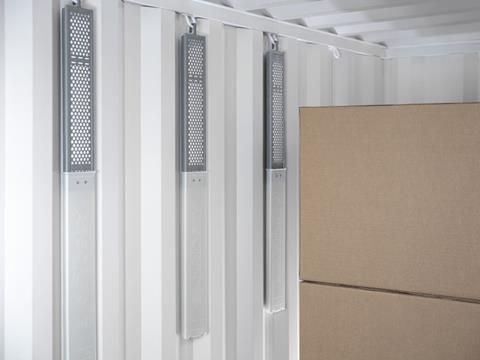
Moisture damage prevention expert Absortech has recently announced a new version of its Absorpole® desiccant that is described as carbon neutral. We speak to the company’s CMO, Elsa Jimenez, about the sometimes overlooked danger of moisture damage to packaging and the products it contains, and take a closer look at the role desiccants can play.
How would you summarise the advantages of calcium chloride desiccants compared to different methods?
Moisture damage inside a container happens because of three conditions: variations of temperature, time, and excess of moisture. While other solutions protect the products from the damage of the water, like oiling or VCI, desiccants absorb the moisture from the air, eliminating the root cause for moisture damages. Besides, often other methods need reconditioning after shipping, they are not efficient from a sustainable point of view.
Calcium Chloride is also more efficient than other desiccant solutions. Calcium Chloride 94% purity can absorb up to 250% its weight in water, this is up to 10-12 times more absorption capacity that traditional alternatives like silica gel or clay. For our customers, this translates into cost savings, a tenfold reduction in logistics but also a reduction of the environmental impact of the moisture damage prevention solution, due the reduction in the usage of resources for equal protection.
How do they work inside the packaging to trap moisture?
Desiccants can be installed inside a packaging or inside a container. The calcium chloride is a hygroscopic salt, which means it absorb and hold moisture. Desiccants absorb the excess of moisture on the surrounding environment, keeping the levels of relative humidity on safe levels. If relative humidity is under control, there will not appear condensation inside the container or packaging.
In desiccants, the calcium chloride is inside a non-woven or Tyvek® bag , a breathing surface. The moisture is trapped, and it is bound into a gel, in the case of our desiccants AbsorGel®, or the water is trap into a collector, like Absorpole®.
What sort of products are they suitable for to be used with?
All industries can use desiccants since every product we know needs to be transported into packaging or shipping containers and can be damaged due to excess of moisture: agricultural commodities (cocoa beans, rice, nuts, seeds), automotive components, appliances, cans for drinks, furniture, clothes, machinery, etc. Moisture can damage every single product and make it not suitable for human consumption, be sold on a supermarket or for manufacturing. Every year millions of tons of products are damaged and very often scrapped because of this problem.
Were there any challenges or obstacles you had to overcome when making Absorpole carbon neutral?
Re-engineering products to be more sustainable is really inspiring even though sourcing raw-material with the right quality and low environmental impact can be challenging. We have a strong R&D within our organisation and have been working close to our suppliers and this has made it possible for us to achieve a good result.
Are you planning on moving more of your desiccants to be carbon neutral?
The new Absorpole® is only the first proof of our new commitment to sustainability. To be carbon neutral implies first to reduce the carbon footprint of the product materials, sometimes reengineering some parts, but also calculate and reduce the CO2 emissions from the sourcing and the production processes. It is not an easy process, but our R&D department is currently working hard to advance in that area.
















